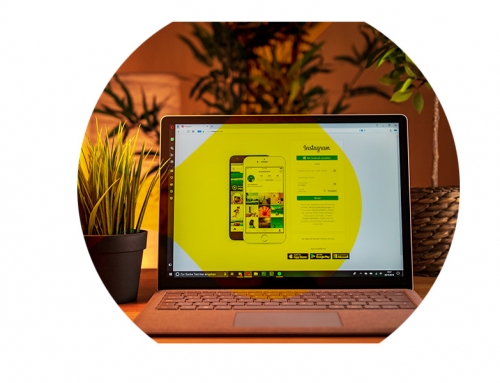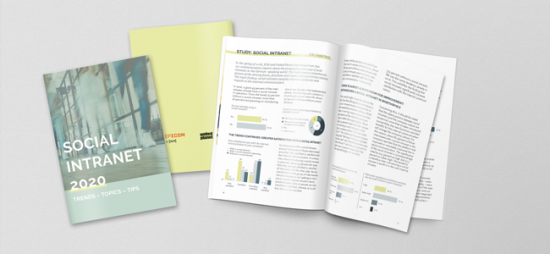2020 will be another exciting year for internal communication, continuing along the path of digital transformation that’s already led to so much momentous change in the field. But as trends in internal communication are always evolving, which ones do you need to watch in order to prove yourself as an internal communications specialist in 2020?
We’ve summarized four ( out of 9 ) of the most important trends for you, so read on and get ready to communicate better than ever in 2020!
Trend #1: The employee experience
In HR departments worldwide, the term Employee Experience has entered popular usage. In 2020, the term is set to become firmly established in the internal communications arena, with what are expected to be some positive consequences. But what does Employee Experience actually mean, and what does the concept have to do with internal communication? While definitions of the term are still in flux, Employee Experience can basically describe every experience that employees have with their place of work. According to Jacob Morgan, author of The Future of Work , the Employee Experience is largely determined by three elements: workplace environment, tools and technology, and corporate culture. The goal of any company should be to create a holistically positive experience for its employees, starting right at onboarding and extending to the way daily news is shared, with every touchpoint in the employee journey reflecting company culture and values.
At the heart of the Employee Experience is effective internal communication, which allows employees to be fully involved and informed about their company and their direct role in its success. To improve the Employee Experience, internal communication and human resources are combining their efforts. The Employee Experience is a holistic concept, which partly stems from the realization that in order to cover the many moments that matter along the employee journey, internal communications and human resources can do their best work by moving closer together. Shared topics include pre-boarding and onboarding, as well as newer areas such as culture boarding, but also more practical, employee-side resources, such as digital vacation requests and sick notes. Everything that provides employees with positive experiences at every point of contact with their employers. Andrew Harvey, Director of Internal Communications at the VMA Group, the leading recruiting company in the field of internal communications, aptly sums it up:

The line between the internal communication and human resources remit is becoming increasingly blurred. Both functions are engaging with the same audience, so it makes sense that the two work together. And with both departments constantly seeking a stronger voice in the boardroom, collaboration could be a real game-changer.”
Trend #2: Personalization has become a must in messaging
As the Employee Experience becomes more and more important, the days when internal communicators could provide uniform content to all of a company’s employees are over. Instead of asking, “What information is available in the company and how can it best be organized?” internal communications in 2020 should be asking: “What are the most important employee personas and how can their daily work routine best be supported?” Employees expect the same personalization in their professional lives that they experience on social media. They’re not interested in receiving every single message sent, but only those with relevance and interest to them. To achieve this goal, internal communicators need to use in-depth employee segmentation methods, such as persona analyses.
On technical platforms such as intranets or employee apps, predefined employee groups are only shown the results that are relevant to them. For example, one group may see a shift plan on its start page, while others may get access to SharePoint. Data analysis is the best way to find out what a certain employee group considers to be relevant or not. It’s generally known, for example, that the most popular content affects one’s own region or was written by employees for employees.
Trend #3: The role of internal communication is changing
The Trend Monitor for Internal Communication in 2019 showed that 64 percent of communicators no longer see it as their most important task to communicate from the top-down. Instead, more than 65 percent of those surveyed stated that the central task of internal communication is to enable people in companies to communicate actively. This answer reflects a cultural change in the industry that will prevail in 2020. Employees are increasingly seen as internal influencers, employee content is becoming a cornerstone of internal communication, and top-down content is being complemented by content travelling in the opposite direction. Carsten Lucaßen, former Head of Digital Communication at Viessmann, perfectly describes the change in internal communication for 2020:

Internal communication comprises three levels, which in the past were often viewed separately. Broadcast (the sending of information), interaction (the exchange between colleagues), and collaboration (topic-specific collaboration). In the future, we will look at these three levels together and develop a unified model for communication within the company. This will enable us to get the most out of ourselves in an increasingly fast and complex environment.”
SCM’s latest study also confirms this change. 46 percent of internal communicators say that they’re concerned with the introduction of collaboration tools. Philipp Bahrt, who is responsible for internal communications at SCM, also confirms that “internal communication is increasingly taking the lead in the area of collaboration within the
digital workplace.”
Trend #4: Internal communication is learning from marketing
Marketing has years of experience when it comes to customer experience. But with the rise of the Employee Experience, IC suddenly has been challenged to adhere to similar rules: Like the customer, the employee is a primary focus of attention, and his or her attention has to be won. In other words, internal communication can learn a lot from marketing and the customer experience. Using different media formats has been particularly popular: While pictures and videos have been the focus of attention until now, marketing podcasts have gained momentum over the past year and are now trickling into internal communication use. For example, Andrea Montua started the first Podcast for internal communication in
Germany: “Tea Talk with Andrea Montua.”
But there are other areas where internal communication can learn from marketing; for example, in the use of social media. On the one hand, if a CEO needs to have the last word on a topic, it might be best for internal communication to cut itself off
from features such as likes, comments, and shares. On the other hand, in order to foster employer branding, internal communication is now challenged with having to be represented in networks such as LinkedIn and Facebook. Says Sabine Beck of ConnectMinds,

Internal communication must be present on social media and know who the influencers in the company are.”
Conclusion: Get Ready for 2020!
If you’d like to read about even more trends in internal communication for 2020, and see some great case studies to back them up, then be sure to check out our complete blog post, Internal Communication 2020: Don’t Miss These 9 Trends! And in the meantime, get ready for a great year of communicating in your organization better than ever before.
About the author

Robert Grover is a former trade book editor at Houghton Mifflin, HarperCollins, and Alfred A. Knopf. Robert Grover now draws on that experience to think and write about how work can be better for everyone. He has a BA in English Literature and Creative Writing from the University of Massachusetts at Dartmouth.









